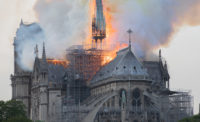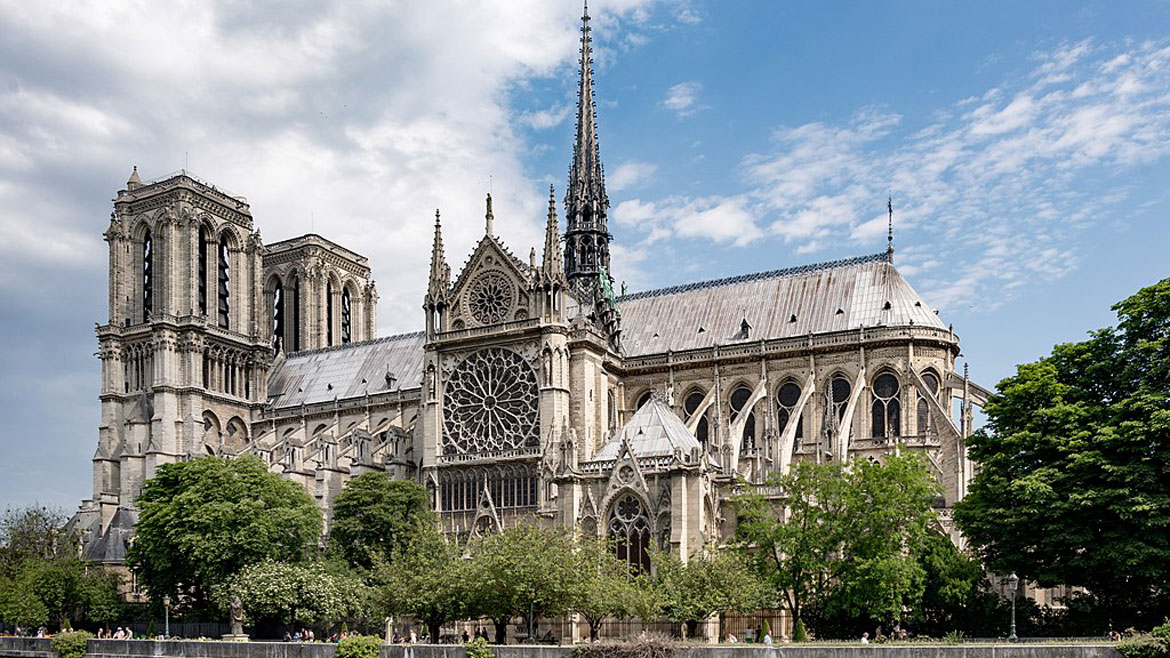Notre-Dame de Paris: Where Are We Now?






Two years ago today, the Cathedral of Notre-Dame went up in flames. In the wake of the disaster, the French president Emmanuel Macron vowed that the monument would reopen in just five years, to coincide with the 2024 Paris Olympic Games. Which means only three years now remain to complete the restoration process if his promise is to be kept. How far has work come along?
As the public body set up by the French government to carry out the operation Friends of Notre-Dame de Paris readily admits, restoration work proper has not yet begun, and will not do so until September 2021 at the earliest, once consolidation of the building has finally been completed. This mammoth effort, estimated at $200 million, has involved decontaminating the site of hundreds of tons of lead dust dumped by the fire; removing, analyzing and cataloging all the debris from the burnt roof and partially collapsed high vault; removing stained glass and artworks for offsite conservation and storage; dismantling the scaffolding that had been put up before the fire and which had fused together in the heat (each of its 40,000 metal tubes had to be sawn out one by one); dismantling and removing the west organ (which counts 8,000 tubes); shoring up all the vaults and windows with timber supports; and installing access scaffolding and a temporary roof to protect the building from the elements. Slowed down by health-and-safety concerns over both lead pollution and the coronavirus pandemic, the consolidation process was a race against time to prevent the cathedral collapsing due to the fire and water damage and the instability caused by the absence of its heavy timber roof.
Meanwhile, planning and testing of the actual restoration has pushed ahead. The much-publicized controversy over how to restore — employing traditional methods, or a contemporary approach using modern techniques and aesthetics? — was finally resolved in July 2020 with the traditionalists winning out: the cathedral will be restored to its last-known state, as recommended in the 1964 Venice Charter (a document drawn up by the International Council on Monuments and Sites that sets forth building-conservation guidelines based on the concepts of authenticity and respect for historic context), with Viollet-le-Duc’s spire reproduced and the roof reconstructed according to medieval techniques.
In March this year, selection and felling of the 1,000 oaks needed for the new roof (which will be medieval in spirit but not an identical copy) began — an important step since the timber must cure for a period of 12 to 18 months before it can be used. Furthermore, cleaning methods have been tried out on two of the cathedral’s chapels: two months were needed to remove 150 years of accumulated dust and filth, consolidate the existing wall colors and restitute losses, a process that produced the surprise discovery of medieval fleurs-de-lis, obscured from view since the Middle Ages, in the chapel of Notre-Dame-de-Guadalupe. Judged a success, the methods tested will now be applied to the 22 other chapels.
So is the five-year deadline still realistic? The short answer is no if full restoration is the goal, but the authorities are adamant that enough will have been completed for a celebratory mass to be held inside the cathedral on April 15, 2024.







